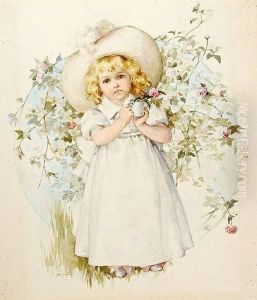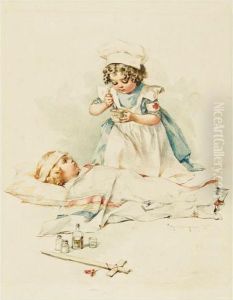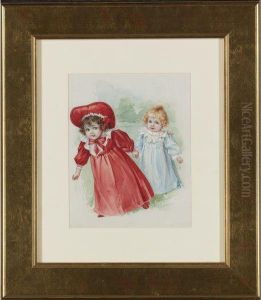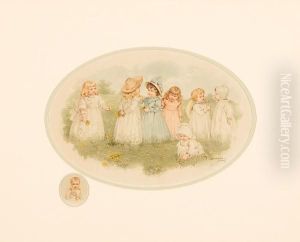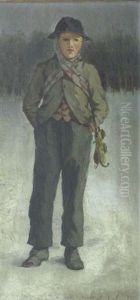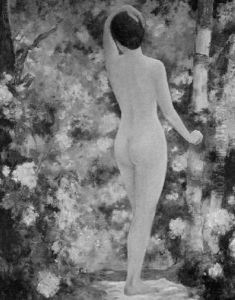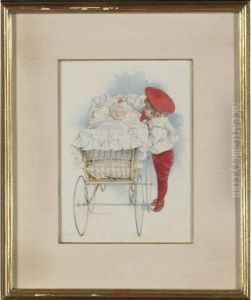Maud Humphrey Paintings
Maud Humphrey was an American illustrator and commercial artist born on March 30, 1868, in Rochester, New York. She was a prominent figure in the art world during the late 19th and early 20th centuries, and her work had a significant impact on the development of American illustration. Humphrey showed an early talent for art and was encouraged by her family to pursue her passion. She studied at the Art Students League of New York and later in Paris, France, which was unusual for a woman of her time. In Paris, she honed her skills and was influenced by the prevailing styles of European art.
Maud Humphrey's illustrations were characterized by their delicate and refined style, often depicting women and children in idyllic settings. This was a popular aesthetic of the time, reflecting the innocence and idealized vision of childhood. She worked with various mediums, including watercolor, and her illustrations were used for children's books, magazines, and commercial advertisements. Humphrey also created a series of watercolor paintings called 'Maud Humphrey Babies,' which were reproduced as prints and became quite popular, adding to her reputation as a leading illustrator of children’s themes.
In addition to her artistic career, Maud Humphrey was also the mother of the famous Hollywood actor Humphrey Bogart. Her marriage to Belmont DeForest Bogart, a surgeon, did not deter her from continuing her work, which was somewhat unusual for a woman of her social standing at the time. Humphrey was also involved in women's suffrage movements and used her art to support the cause.
Maud Humphrey’s career was marked by professional success at a time when the field of illustration was dominated by men. Her work was widely recognized, and she was one of the first women to be elected to the prestigious New York Water Color Club. Despite her achievements, following her death on November 22, 1940, her legacy was somewhat overshadowed by the fame of her son. However, in recent years, there has been a renewed interest in her work, and she is now acknowledged as an important figure in the history of American illustration.
